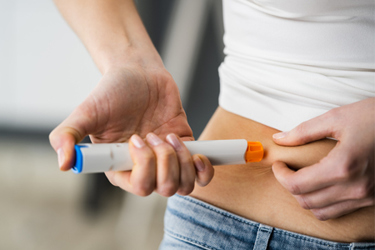ArQ - Bios

Subcutaneous
Low - Medium Viscosities
< 100 cP
1 - 10 ml
High - Ultra-High Viscosities
>100 - 10,000 cP
0.5 - 3 ml
ArQ® - Bios offers a small, simple to use package to deliver high viscosity formulations. Oval’s proprietary COC PDC technology allows us to build the device around a stronger drug container that can deliver 1ml of formulations up to 1000cP through a 25G needle in less than 5 seconds. The ArQ-Bios platform also can deliver greater volumes than 1 ml subject to matching the formulation characteristics with acceptable patient tolerability.
Designed to meet the growing demand for large-volume and ultra-high viscosity drug formulations, the Bios platform offers a versatile subcutaneous delivery solution. With fast switching between 1 mL, 2.25 mL, and 5 mL capacities, it accommodates viscosities up to 1000 cP and is gas-powered for broad operational flexibility. The device integrates ISO-standard plunger stoppers and staked-needle syringes, supporting both glass and plastic formats, and aligns with standard fill-finish processes for streamlined manufacturing. For patients and caregivers, the ergonomic design, intuitive two-step operation, and large inspection window enhance usability and adherence. Audible, visual, and tactile feedback signals successful delivery, while passive needle safety ensures protection throughout use. The needle remains hidden during administration, reducing anxiety and improving the user experience. Optional connectivity hardware adds a layer of digital integration.
Explore how the Bios platform supports effective delivery of challenging formulations with ease and safety.
Get unlimited access to:
Enter your credentials below to log in. Not yet a member of ECM Connection? Subscribe today.
